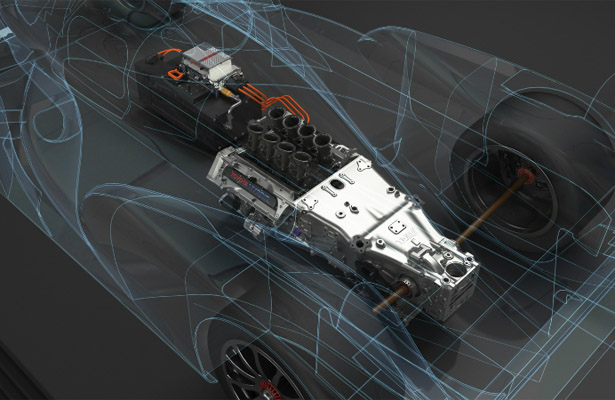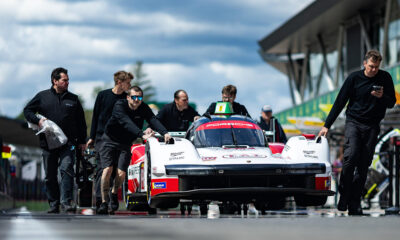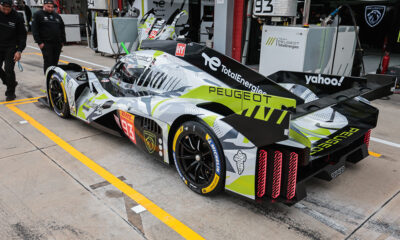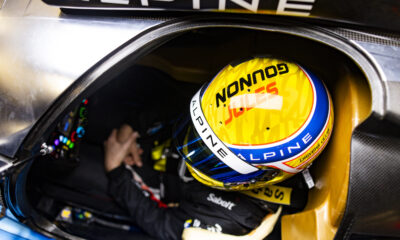
Image: Toyota
Details on Toyota’s 2014 LMP1 car have emerged, including the configuration of the prototype’s engine and hybrid system.
Revealed during last weekend’s FIA World Endurance Championship round in Sao Paulo, Toyota Racing technical director Pascal Vasselon confirmed the next-gen Toyota will feature a normally aspirated V8 engine, along with a hybrid system mounted on both front and rear axles.
The new-for-2014 LMP1 regulations allow for any possible engine configuration, as powerplants will be balanced according to energy allocation through the use of fuel flow limiters.
“Engine experts still disagree on what will be the best engine architecture,” Vasselon said. “Is it a small turbocharged engine or is it a big, normally aspirated engine running at low revs? Our engine people are convinced that a big, naturally aspired engine will be better than a small turbo. It’s our belief. We will find out.”
Vasselon would not disclose the displacement of the powerplant, but it’s believed it would be similar to the 3.4-liter V8 architecture the Japanese manufacturer currently employs in its TS030 Hybrid.
A significant change, however, will come with the use of the capacitor-based energy recovery system on both axles, instead of just rear power that’s seen on its current-spec LMP1 car.
It’s undecided which level of energy recovery Toyota will use. The new regulations allow for between 2 to 8 megajoules of energy (in 2MJ increments), with each class being allocated varying amounts of fuel according to the power.
“We know that we’re going to use two motors: one front and one rear,” Vasselon confirmed. “But we have not finalized the exact class which we will operate. If you don’t exactly match the class where you are, you will lose fuel.
“For example, if you target 6mJ and you manage only 5mJ, you don’t get fuel advantage over the last 1MJ of hybrid and you lose the fuel difference between 4 and 6. So at some point, you would be better to go for the 4MJ class.”
Vasselon said a final decision on its ERS configuration would have to be made during the car’s homologation, which is expected to come early next year.
“It’s such a big change that we started [development] quite a long time ago, at least in terms of simulations,” he said. “At the moment, we’re full throttle on the design. We’re a little bit late. We’re at the moment finalizing the design of the monocoque and starting the production. Our target is to have a roll-out at the beginning of next year.”
Toyota’s chief rival Audi has yet to reveal its engine or hybrid configuration, while Speculation has run rampant over the powerplant in Porsche’s LMP1 car, which has already begun on-track testing.
In the LMP1 Privateer ranks, Rebellion’s new R-One prototype will use an updated Toyota RV8KLM engine, while HPD recently announced it will develop LMP1 engines based on its 2.2-liter V6 turbo currently used in IndyCar.





















